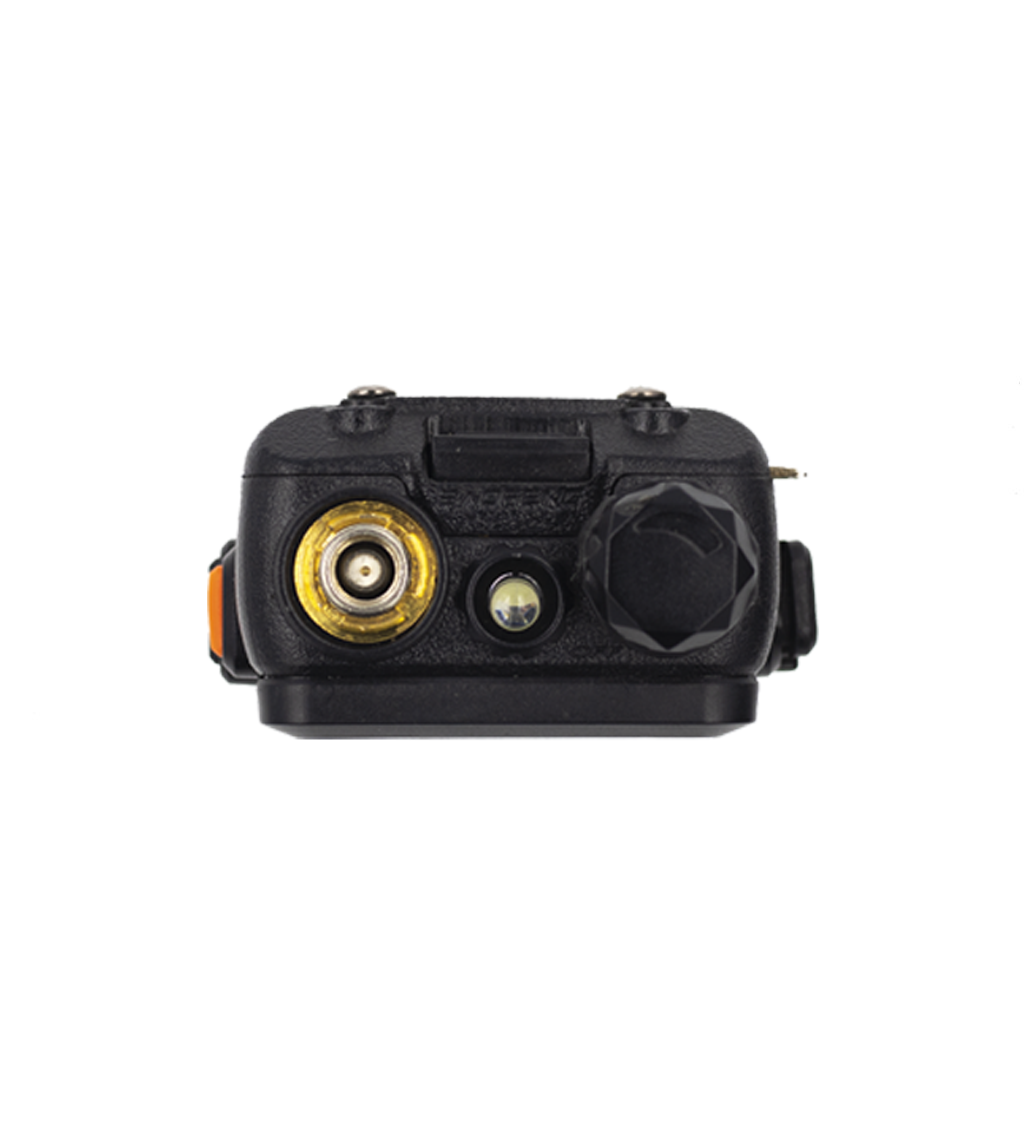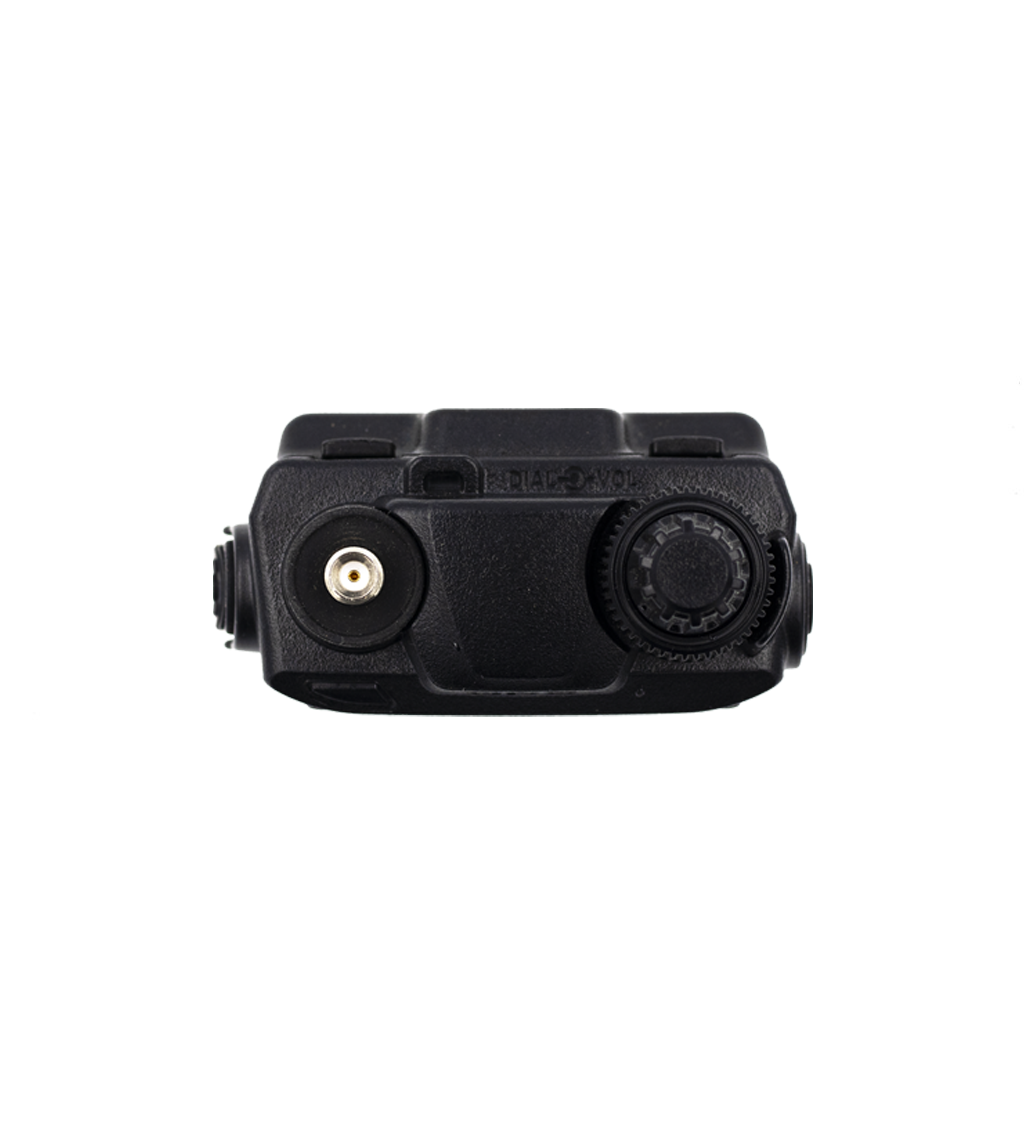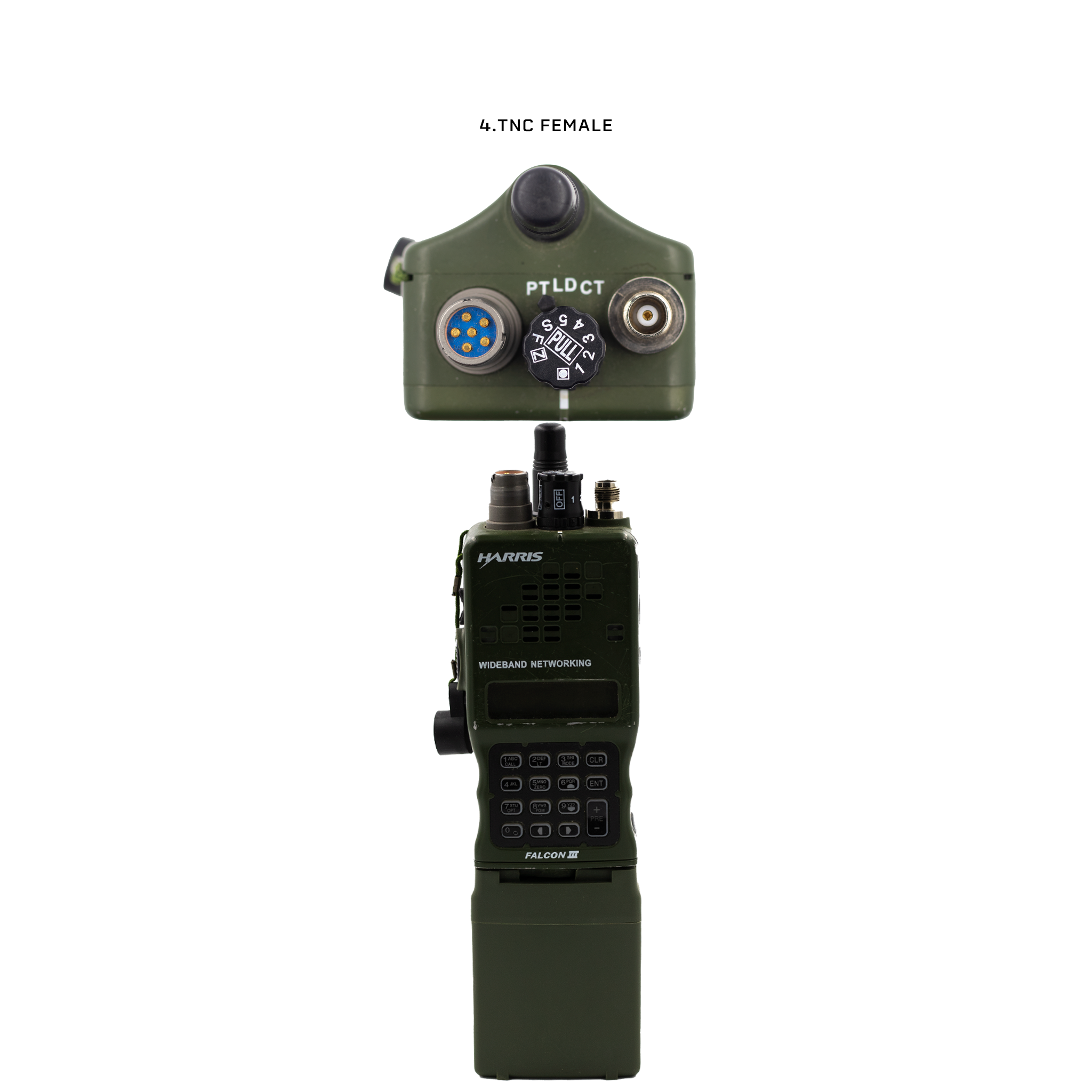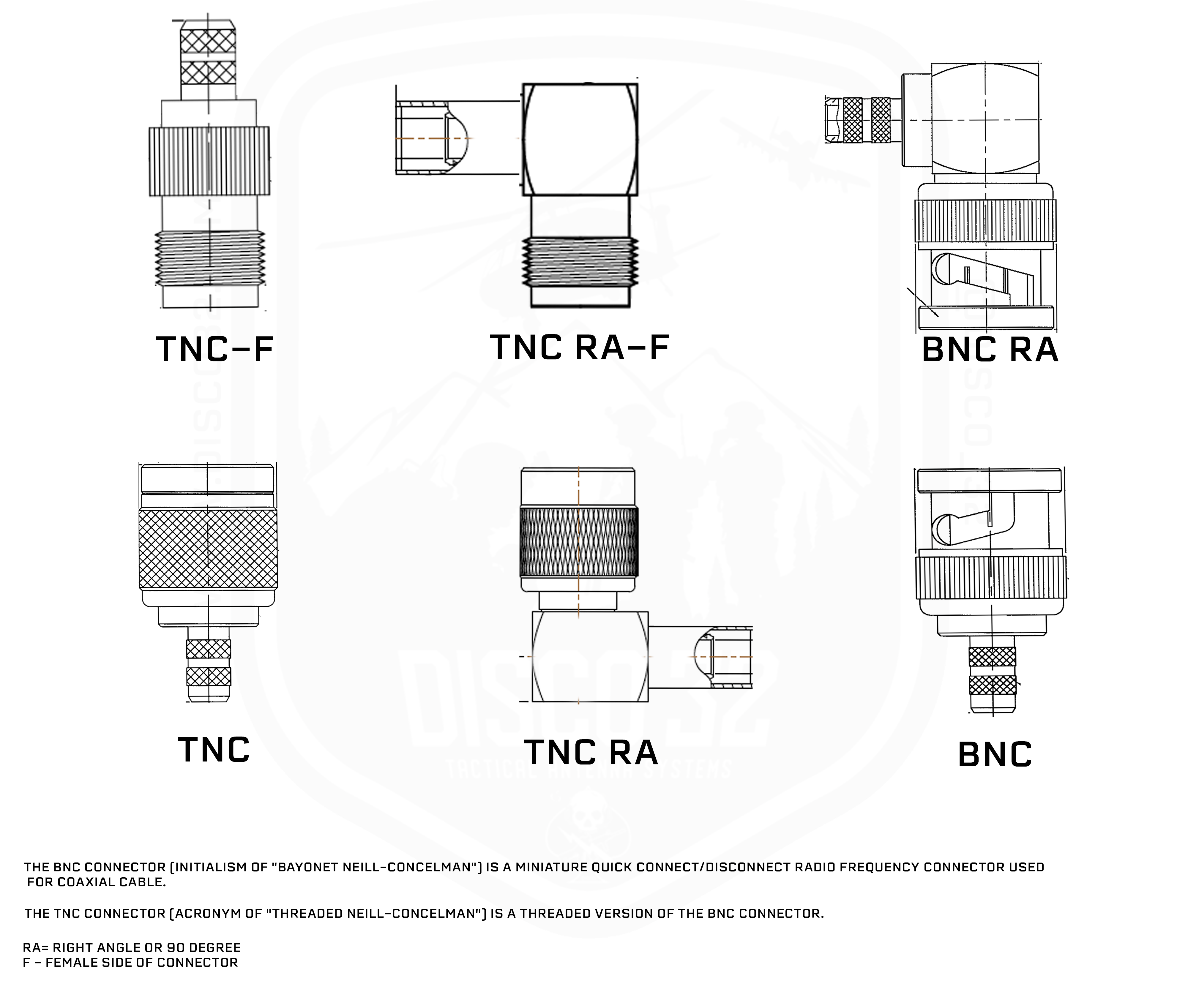Antenna Adapter Selection ToolUpdated a year ago
FAQ on TNC, BNC, and SMA Connectors

This FAQ is structured to provide detailed insights into TNC, BNC, and SMA connectors, focusing on their specifications, applications, and the necessity of adapters for civilian two-way radios. Each connector type is explored in its own section to help you understand their unique features and how they're adapted for more robust applications.
SMA Connectors
What is an SMA Connector?
- Definition: SMA (SubMiniature version A) connectors are coaxial RF connectors with a screw-type coupling mechanism. They are known for their excellent electrical performance up to 18 GHz, and even higher in precision models.
Male vs. Female SMA Connectors:
- Male SMA: Equipped with a central pin and threads for a screw-on connection to the female connector.
- Female SMA: Has a central receptacle and internal threads to secure the male connector’s threaded coupling.
Applications:
- SMA connectors are predominantly used in civilian two-way radios due to their high-frequency performance and compact design. They are also suitable for telecommunications, antennas, and satellite systems.
Importance of Adapters for Civilian Two-Way Radios
Adapting SMA for More Robust Applications:
- Most civilian two-way radios use SMA connectors, but for more durable connections or compatibility with different equipment, adapters to BNC or TNC connectors may be necessary.
- To BNC: Provides the advantage of quick connect/disconnect, useful when equipment is frequently changed.
- To TNC: Offers a more secure, vibration-resistant connection, perfect for harsh environments or long-term deployments.
- Notes: You may run into proprietary interface issues with certain radio sets, if you are unsure contact DISCO32 customer service.
 SMA M RADIO REQUIRES SMA F ADAPTERS |  SMA F RADIO REQUIRES SMA M ADAPTERS |
 |  |
 SMA F ADAPTER |  SMA M ADAPTER |
TNC Connectors
What is a TNC Connector?
- Definition: TNC (Threaded Neill–Concelman) connectors are RF connectors used for securing coaxial cables. They are designed to offer better performance at microwave frequencies and are characterized by their threaded connection system.
Male vs. Female TNC Connectors:
- Male TNC: Comes with a central pin and external threads for a secure mechanical connection.
- Female TNC: Features a central receptacle for the male pin and internal threads to match the male connector's threads.
Applications:
- Ideal for rugged environments and applications where vibration resistance is crucial. They are extensively used in military, aviation, and some industrial settings.
 TNC F RADIO REQUIRES TNC M ADAPTER |  TNC M TO BNC F ADAPTER |
BNC Connectors
What is a BNC Connector?
- Definition: BNC (Bayonet Neill–Concelman) connectors are quick-connect/disconnect RF connectors for coaxial cable. Their defining feature is the bayonet lock mechanism, which allows for easy and fast connection and disconnection.
Male vs. Female BNC Connectors:
- Male BNC: Features a central pin and a bayonet locking mechanism on the outside for quick attachment.
- Female BNC: Equipped with a central receptacle for the male pin and internal slots to engage the bayonet lock of the male connector.
Applications:
- BNC connectors are best for scenarios requiring quick changes or limited space, such as in test and measurement, radio, and video applications.
Antenna Relocation Connectors

Key Takeaways:
Using adapters can significantly enhance the versatility and functionality of two-way radios, making them fit for a wider range of applications.
Selecting the right connector and understanding the potential need for adapters are crucial steps in ensuring the reliability and performance of your communication equipment.
This breakdown by connector type aims to guide you through choosing the appropriate connector for your needs, considering the specific requirements of your application and the benefits of adapting connectors for enhanced compatibility and performance.